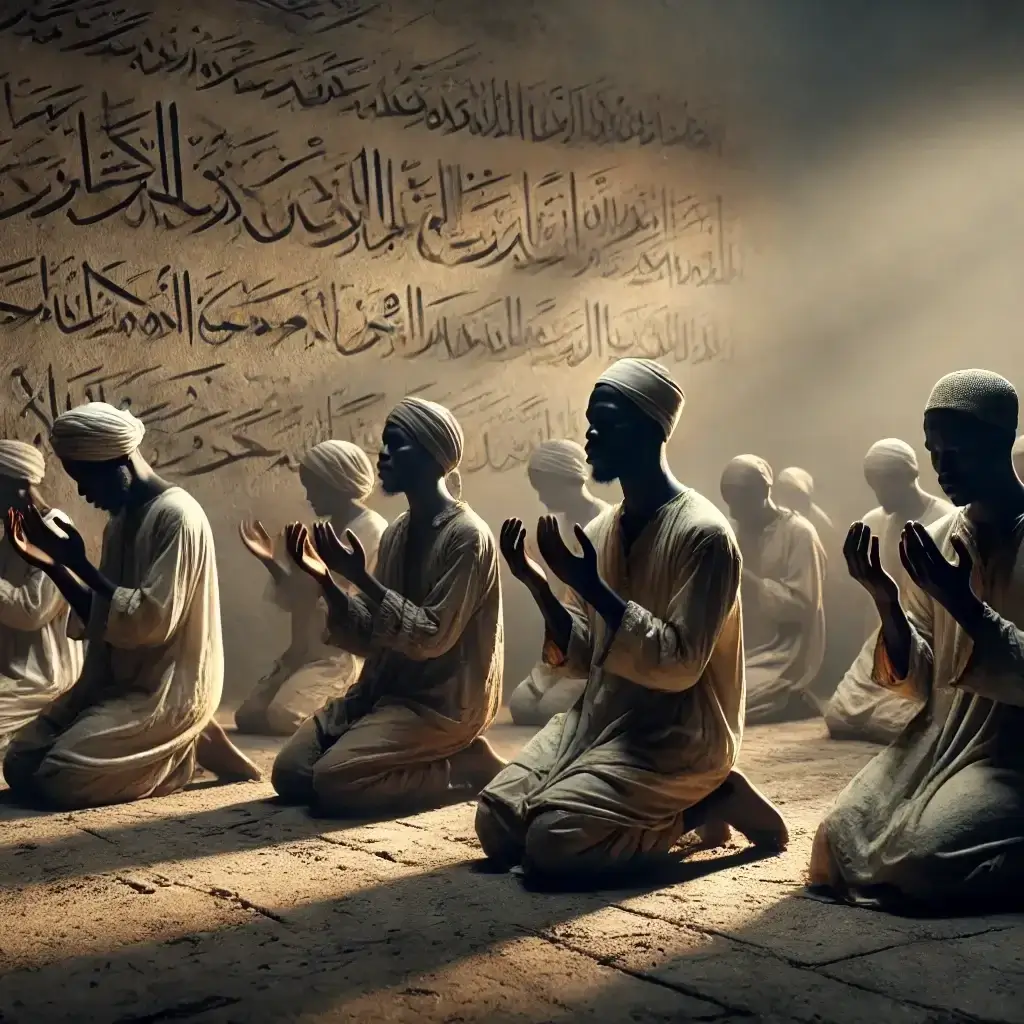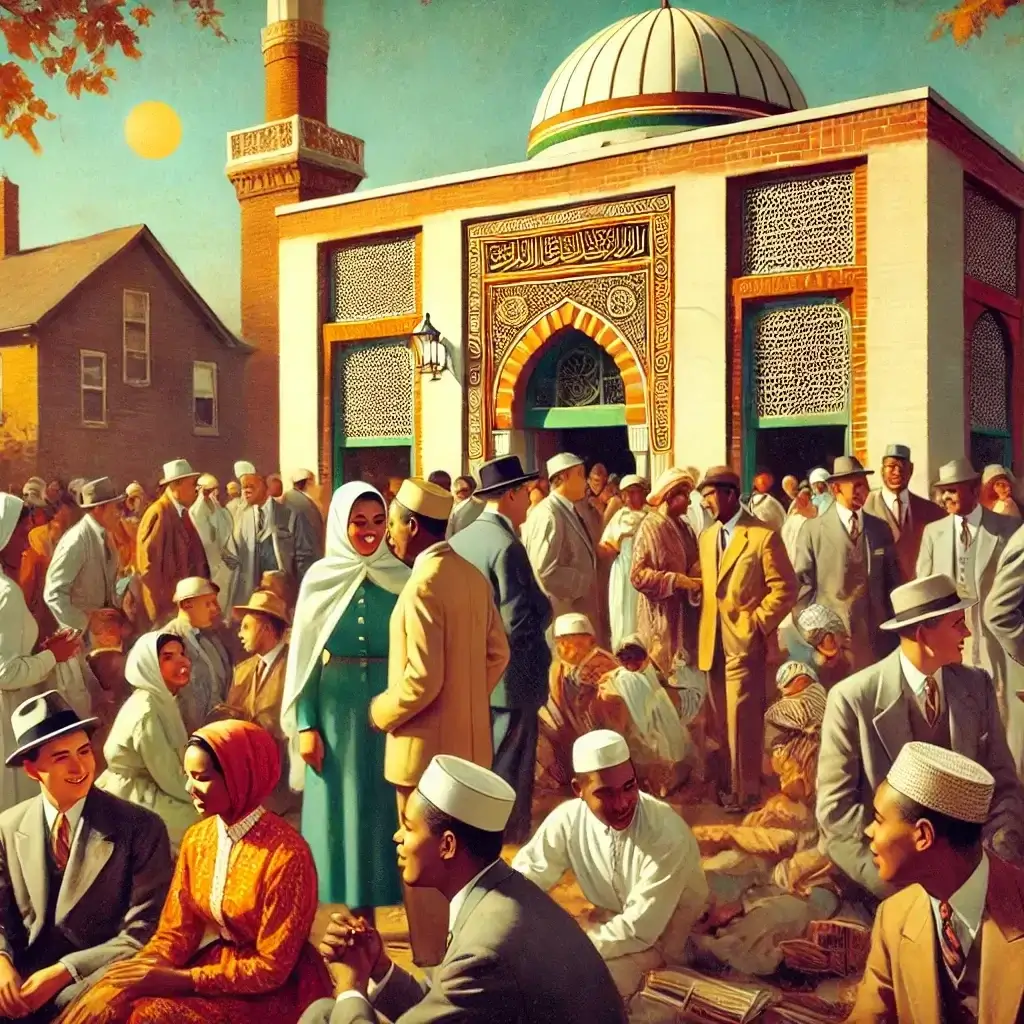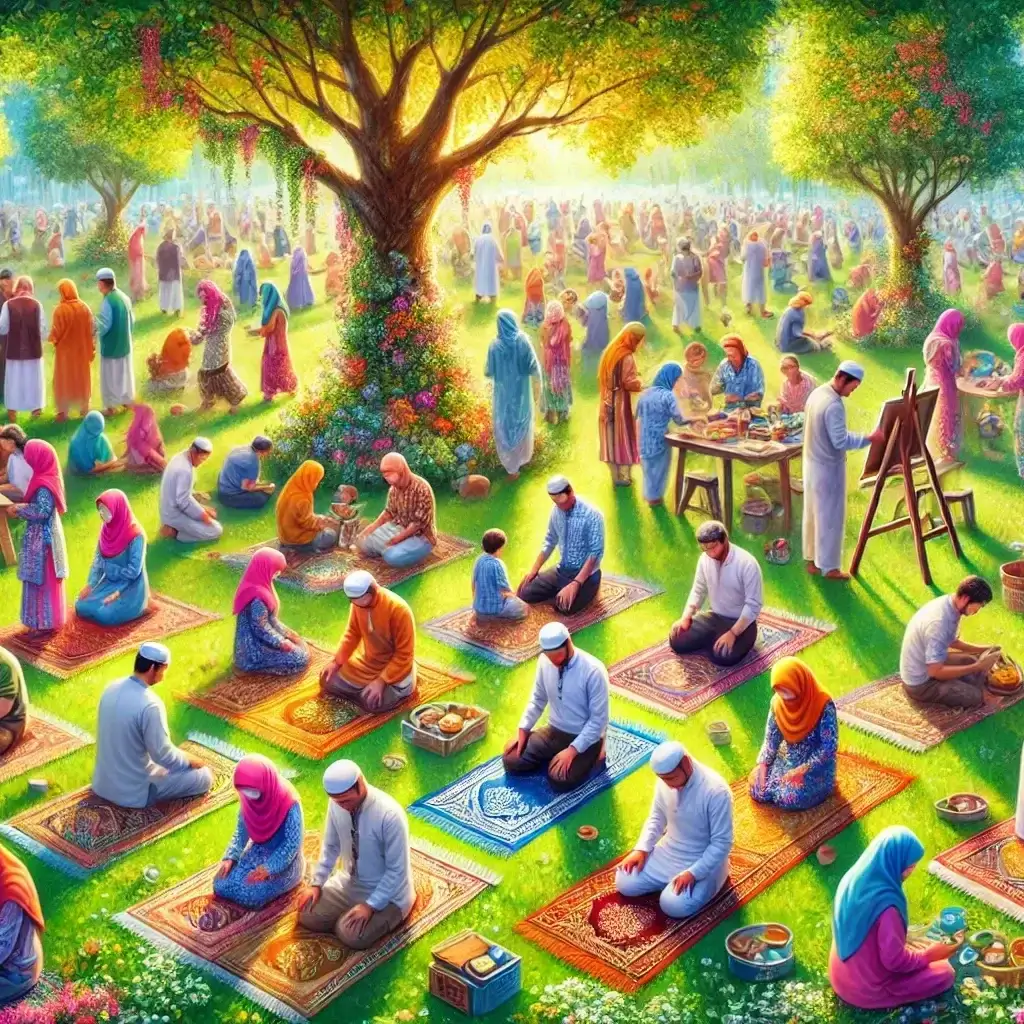Islamic Culture In America

Over the last hundred years, especially within the confines of a diversified society, Islamic culture in America has grown increasingly prominent. The roots of its development are very deep, deeply seated in the long history that Muslims had while living in the country, from the early African slaves brought to the American colonies to the more recent waves of immigration in the 20th and 21st centuries. As Muslims have integrated into American society, Islamic culture in the U.S. has taken on many unique shapes and forms; the bottom line, though, is a deep connectedness with its religious and cultural heritage. A mix of Islamic practices and American society results in a vividly colored and diverse expression of Islam which speaks to both the challenges and the opportunities of being a Western Muslim.
Early History: African Muslims and the Making of American Islam
The presence of Muslims can be traced to the earliest history of Europe’s colonization. The first Muslims in what is now America were, by and large, enslaved Africans. Studies estimate that 10 to 20 percent of the enslaved Africans who came into the American colonies came as Muslims. These African Muslims often came to the Americas bearing a profound cultural or religious heritage, usually including knowledge of Arabic and a familiarity with the scholarship, prayer, fasting, and dietary taboos respecting what is haram.

Much of this early Islamic heritage was obscured or lost, however, to the brutalities of slavery and forced assimilation. Eventually, most of these African Muslims were coerced into forsaking their faith, or they found themselves incapable of practicing all facets of Islam. Their contribution toward American culture would later be recognized within the broader identity of African American culture through their use of music, language, and sense of community.
With the abolition of slavery in the 19th century, new forms of African American Islam began to emerge. It was in the early 20th century that the Nation of Islam, a pivotal movement for African Americans seeking spiritual fulfillment and empowerment, came into being. Figures like Elijah Muhammad and Malcolm X, who later converted to Sunni Islam, were instrumental in shaping Islamic culture in America, particularly among African Americans. The Nation of Islam did, indeed, emphasize self-sufficiency, discipline, and identity attractive to many African Americans seeking another religion to adopt than mainstream Christianity and pervasive racism.
Immigration and the Growth of Islamic Communities
Although African Americans were central to the making of Islamic culture in America, the post-1965 wave of immigration dramatically reshaped the Muslim landscape. The Immigration and Nationality Act of 1965 eliminated previous quotas limiting immigration from non-European countries and thus opened the door for Muslims from around the world to settle in the U.S.
Immigrants from the Middle East, South Asia, and Southeast Asia started to build burgeoning Muslim communities in various cities like New York, Chicago, Detroit, and Los Angeles. Many of their communities had a number of educated professionals, students, and entrepreneurs with richly varied cultural and linguistic traditions. Unlike the African American Muslim experience, many of these immigrants practiced Sunni Islam, and their culture often reflected the diversity of their countries of origin. Many were a mix of different ethnic identities including Arabs, Pakistanis, Bangladeshis, Indonesians, and Turks.
The influx of immigrants also gave rise to Islamic centers, mosques, and schools across the U.S. These places of worship actually acted more as cultural centers where Muslims would meet for various activities other than worship: socializing, learning, and celebrating their religious and cultural practices. For instance, the Islamic Society of North America was founded in 1963 and has been one of the major organizations catering to the needs of Muslim communities all over the United States. Its influence has reached beyond religious matters and encompasses advocacy for civil rights, interfaith dialogue, and public education on Islam.

The Islamic holidays-Ramadan, Eid al-Fitr, and Eid al-Adha-gained wider recognition; likewise, food products available in supermarkets and restaurants became increasingly halal. The longer-term visibility of Islam and Muslims in American life was fostering greater religious pluralism.
Challenges: Islamophobia and the Struggle for Recognition
Notwithstanding these developments, the growth of Islamic culture in America has not been devoid of challenges. The most serious challenge it has faced so far is the rise of Islamophobia, especially after the September 11, 2001 terrorist attacks. Immediately after 9/11, Muslims in America were under increased suspicion, prejudice, and discrimination. Mosques and Islamic centers suffered hate crimes, and Muslims were portrayed as a potential threat to national security in the media.
This atmosphere of fear and distrust prompted a serious effort by the Muslim communities to reach out to the general American public and try to show their shared values of peace, tolerance, and patriotism. Many Muslim organizations began education campaigns to teach Americans about Islam and its teachings in hopes of breaking down stereotypes and building a better understanding. The work of Muslim civil rights groups, like the Council on American-Islamic Relations, became imperative in the reclamation of rights and liberties of Muslims in the U.S. from the pervasive narratives of violence and extremism that the religion had built up for itself.
However, Islamophobia is still very real today, and most Muslims still struggle with difficulties in public life: discrimination in the workplace, educational institutions, and law enforcement. Nevertheless, American Muslims press on to assert their claim to rights and take their place within the social texture of America. Many have been able to find allies within the greater civil rights movement where, increasingly, coalitions along racial, ethnic, and religious lines form part of the important building blocks toward a fight for justice and equality.
Cultural Contributions: Arts, Media, and Public Life
During the last few decades, American Muslims have contributed significantly to cultures in every imaginable area, ranging from art and literature to politics, sports, and entertainment. The active presence of Muslim Americans has emerged in the arts, from musicians and filmmakers to writers and visual artists, many drawing on their Islamic heritage for unique works that mix traditional and contemporary styles.
For instance, the work of artists-the late poet and activist Agha Shahid Ali, the musician and composer Riz Ahmed, or the painter and calligrapher Saira Wasim-has contributed to bridging the gap between Islamic traditions and American cultural sensibilities. More often than not, their creations are imbued with themes of identity and belonging, about the complexities of being Muslim in the West, all of which offer new perspectives on the Muslim experience in America.
But at the same time, Muslim athletes, from boxing champion Muhammad Ali to NBA player Kareem Abdul-Jabbar to Olympic gold medalist Ibtihaj Muhammad, have also been very outspoken in challenging the stereotypes about Muslims and showing it is possible to balance faith with participation in American society at the highest levels. Ali’s very public conversion to Islam and his vocal objection to the Vietnam War enshrined him as a symbol of resistance and social justice, while Abdul-Jabbar’s work on racial equality and religious freedom has made him one of the most influential athletes in American history.
Not to be outdone by their high-profile representatives, Muslim American communities have taken important steps in political activism and public service. From the election of Muslim Americans to local and national offices to their involvement in social justice movements, Muslims in the U.S. have found ways to increasingly engage in the political process and advocate for policies that reflect their values. In fact, another critical moment in the context of Muslim American representation in the U.S. political life was in 2018 when Omar and Rashida Talib were elected into the U.S. Congress. It spoke more to a rising diversification within the American political life.
The Future of Islamic Culture in America

Islamic culture is filled with many traditions, languages, and ways of practicing religion within America. It has grown into a rich mosaic over the generations through the legacy of African American Muslims, immigrant groups, and Muslim Americans who have integrated Islam into the cultural fabric of their lives. In the face of extraordinary pressures-Islamophobia and political marginalization-American Muslims are doggedly working to secure a place within the nation’s cultural and social life. And with their numbers growing and their influence widening, it is a foregone conclusion that Islamic culture will continue to shape and be shaped by the broader American experience, contributing to the ongoing conversation about identity, faith, and community in an increasingly pluralistic society.
Learn more about the vibrant history and contributions of Muslims in America. Share this article to promote awareness of Islamic culture and diversity.

